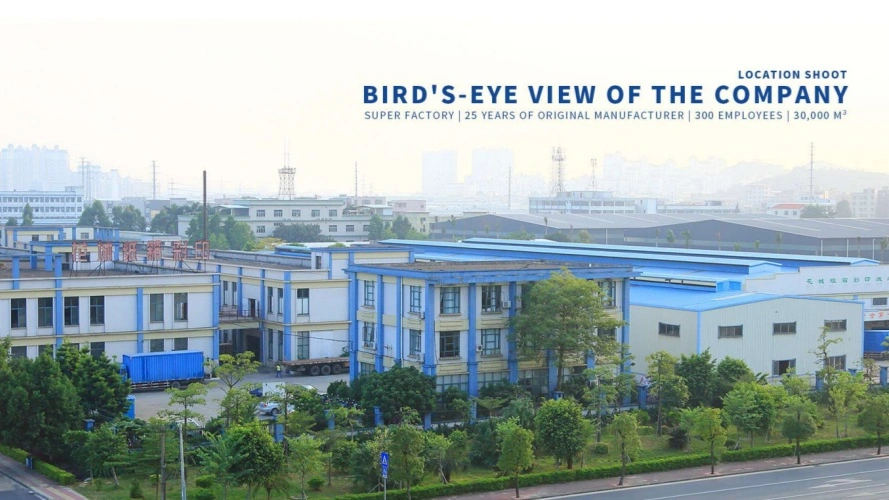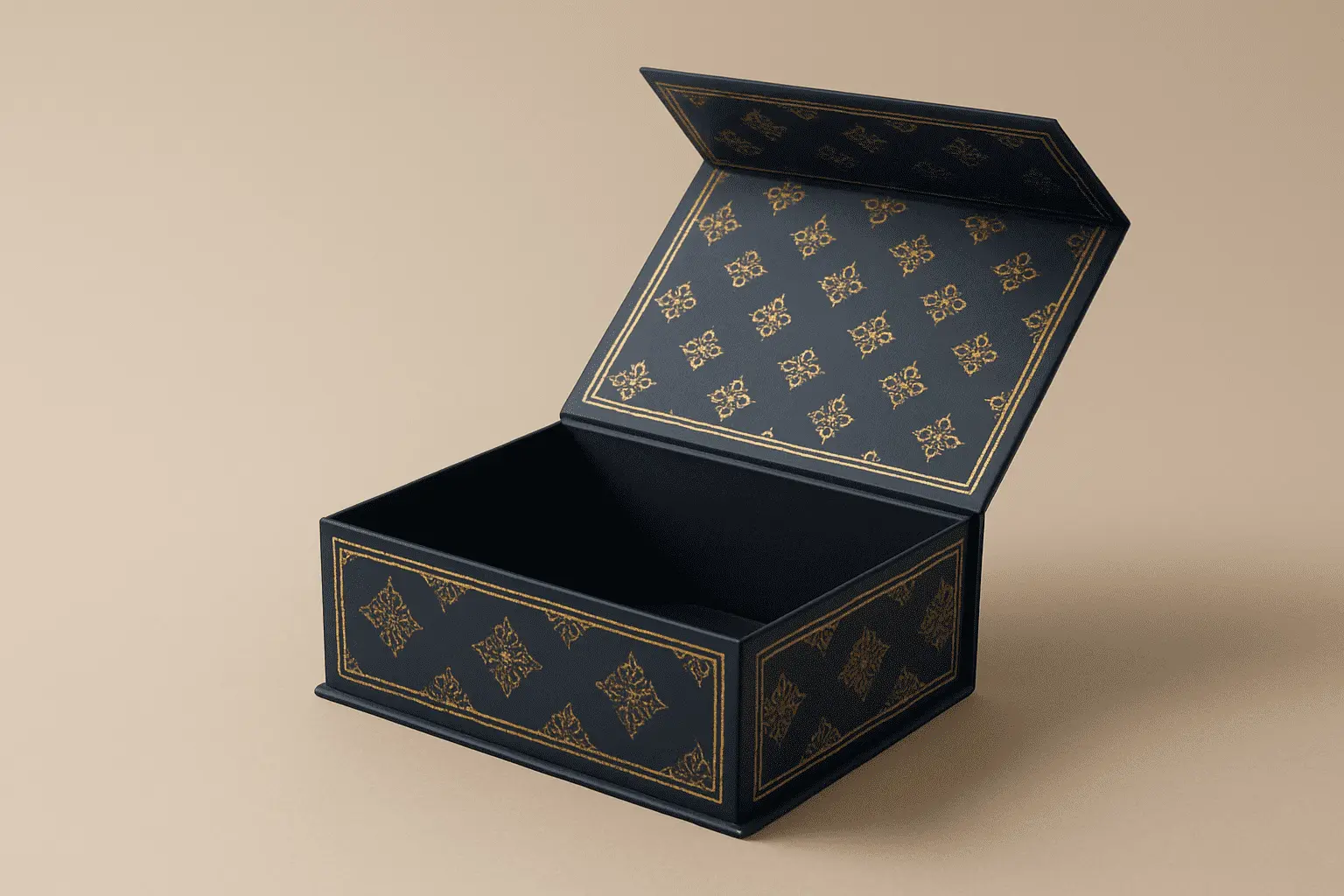Box Templates: The 9 Best Packaging Box Template Resources
In today's competitive marketplace, packaging design plays a crucial role in brand differentiation and customer attraction. Whether you're launching a new product or redesigning existing packaging, having access to quality box templates can significantly streamline your design process. This comprehensive guide explores the best packaging box template resources available, helping businesses create stunning product box designs that capture attention and drive sales. From free online platforms to professional design tools, we'll examine the top resources that enable brands to develop effective packaging solutions that resonate with their target audience.

Understanding the Importance of Professional Box Templates
Professional box templates serve as the foundation for effective product box design, providing structured frameworks that ensure both aesthetic appeal and functional integrity. These templates eliminate the guesswork involved in creating packaging from scratch, offering pre-designed layouts that accommodate various product dimensions and branding requirements. The significance of quality templates extends beyond mere convenience – they represent a strategic investment in brand presentation and customer experience. Modern consumers make purchasing decisions within seconds of seeing a product, making the visual impact of your product box absolutely critical. Professional templates incorporate design principles such as proper spacing, alignment, and visual hierarchy that amateur designs often lack. They also account for technical requirements like bleed areas, fold lines, and cutting guides that are essential for professional printing and manufacturing. When selecting templates, businesses should consider factors such as material compatibility, printing processes, and structural integrity to ensure the final product meets both aesthetic and functional standards.
Digital Template Platforms and Online Resources
The digital landscape offers numerous platforms specializing in packaging box templates, each catering to different skill levels and design requirements. Adobe Creative Suite remains the industry standard, with Illustrator and InDesign providing extensive template libraries specifically designed for product box creation. These platforms offer sophisticated tools for customizing templates, allowing designers to modify dimensions, colors, and graphics while maintaining structural integrity. Canva has emerged as a popular alternative for businesses seeking user-friendly design solutions. Their product box template collection includes options for various industries, from cosmetics to electronics, with drag-and-drop functionality that makes customization accessible to non-designers. The platform's collaboration features enable teams to work together on packaging designs, streamlining the approval process and ensuring brand consistency across multiple product lines. Packaging design-specific platforms like PackagingGuru and Arden Software provide specialized templates that focus on structural design and manufacturing requirements. These resources offer templates with precise measurements and technical specifications that ensure compatibility with professional printing equipment. The templates include detailed instructions for assembly and often feature multiple variations to accommodate different product sizes and shapes.
Industry-Specific Template Categories
Different industries require unique packaging approaches, and the best template resources recognize this diversity by offering specialized categories. Food and beverage packaging templates must comply with regulatory requirements while maintaining visual appeal and structural integrity. These templates often feature moisture-resistant designs and include space for nutritional information and ingredient lists, ensuring compliance with food safety regulations. Cosmetics and personal care product box templates emphasize luxury and sophistication, incorporating elements like spot UV coating areas, embossing guides, and foil stamping zones. These templates understand that cosmetic packaging serves as a marketing tool, with designs that convey quality and desirability. The templates often include variations for different product types, from small items like lipsticks to larger products like skincare sets. Electronics packaging templates focus on protection and functionality, featuring designs that accommodate foam inserts and protective elements. These templates consider the need for product visibility while ensuring adequate protection during shipping and handling. They often include areas for technical specifications, warranty information, and safety warnings that are crucial for electronic products.
Customization and Branding Considerations
Effective product box design requires seamless integration of brand elements with template structures. The best template resources provide flexible frameworks that accommodate various branding requirements without compromising structural integrity. This includes consideration of logo placement, color schemes, and typography that align with brand guidelines while maintaining readability and visual impact. Customization options should extend beyond surface-level changes to include structural modifications that reflect brand personality. Premium brands might require templates that accommodate luxury finishing options like foil stamping, UV coating, or embossing. These advanced features require templates with specific design areas and technical specifications that ensure proper execution during manufacturing. Color management represents another critical aspect of template customization. Professional templates include color profiles and printing specifications that ensure accurate color reproduction across different printing methods. This is particularly important for brands with specific color requirements, as inconsistent color reproduction can damage brand recognition and customer trust.
Technical Specifications and Manufacturing Requirements
Professional product box templates must account for various technical requirements that ensure successful manufacturing and assembly. This includes precise measurements for die-cutting, scoring, and folding operations that are essential for creating functional packaging. Templates should specify material requirements, including paperboard thickness options ranging from 250g to 400g, depending on the product's protection needs and desired premium feel. Manufacturing considerations extend to printing processes and surface treatments that enhance visual appeal and tactile experience. Templates should accommodate various printing methods, including offset printing, digital printing, and flexographic printing, each with specific requirements for color separation and registration marks. Surface treatments like cold or hot foil stamping, UV coating, frosted touch finishes, and embossing require specific design considerations that professional templates incorporate. Quality control measures represent another crucial aspect of technical specifications. Templates should include registration marks, color bars, and quality control elements that ensure consistent production quality. This is particularly important for businesses requiring large production runs where consistency across thousands of units is essential for maintaining brand standards.
Sustainable and Eco-Friendly Template Options
Environmental consciousness has become increasingly important in packaging design, with consumers and businesses seeking sustainable alternatives to traditional packaging materials. The best template resources now include options for eco-friendly materials and design approaches that minimize environmental impact while maintaining functionality and visual appeal. FSC-certified materials represent the gold standard for sustainable packaging, ensuring that paperboard comes from responsibly managed forests. Templates designed for FSC-certified materials include specifications for recycled content percentages and guidelines for sustainable printing practices. These templates often feature designs that minimize waste during production and incorporate elements that communicate environmental responsibility to consumers. Recyclable design principles are increasingly incorporated into modern templates, with features that facilitate easy recycling and disposal. This includes designs that minimize mixed materials, use water-based inks, and avoid treatments that complicate recycling processes. Templates may also include areas for recycling symbols and instructions that help consumers properly dispose of packaging materials.
Cost-Effective Solutions for Small Businesses
Small businesses and startups often face budget constraints that make professional packaging design challenging. However, numerous template resources cater specifically to these needs, offering cost-effective solutions that don't compromise on quality or professional appearance. These resources understand that effective packaging is crucial for small business success and provide accessible options for creating compelling product box designs. Free template resources, while limited in customization options, can provide excellent starting points for small businesses. These templates often include basic design elements and structure that can be modified using standard design software. However, businesses should be aware of licensing restrictions and ensure that free templates meet their specific requirements for commercial use. Subscription-based template services offer middle-ground solutions that provide access to extensive template libraries for affordable monthly fees. These services often include additional features like design consultation, customization assistance, and printing recommendations that can be invaluable for small businesses navigating the packaging design process.
Professional Design Services and Custom Solutions
While templates provide excellent starting points, some businesses require fully custom packaging solutions that reflect unique brand requirements and product specifications. Professional design services specialize in creating bespoke product box designs that incorporate brand elements, technical requirements, and manufacturing specifications into cohesive packaging solutions. Custom design services typically begin with comprehensive consultation processes that evaluate brand requirements, product specifications, and target market preferences. This analysis informs design decisions and ensures that the final packaging solution aligns with business objectives and customer expectations. Professional designers understand the interplay between aesthetics and functionality, creating designs that are both visually appealing and practically effective. The custom design process often includes multiple revision cycles and prototype development that allow businesses to evaluate design concepts before committing to full production. This iterative approach ensures that the final design meets all requirements and provides opportunities for optimization based on real-world testing and feedback.
Quality Assurance and Testing Protocols
Professional packaging design requires rigorous quality assurance processes that ensure consistent results across production runs. This includes testing of structural integrity, printing quality, and assembly processes that verify template accuracy and manufacturing feasibility. Quality assurance protocols should address both aesthetic and functional requirements, ensuring that the final product meets brand standards and customer expectations. Structural testing evaluates the packaging's ability to protect products during shipping and handling, including drop tests, compression tests, and vibration testing that simulate real-world conditions. These tests verify that template specifications translate into packaging that performs effectively throughout the supply chain. Print quality testing ensures that color reproduction, registration, and finishing processes meet specified standards. This includes evaluation of color consistency, print resolution, and surface treatment application that affect the final product's appearance and tactile qualities.
Integration with Manufacturing Processes
Effective template design requires understanding of manufacturing processes and equipment capabilities that influence design feasibility and production efficiency. Templates should accommodate various manufacturing methods, from traditional die-cutting to modern digital cutting technologies, ensuring compatibility with available production equipment. Manufacturing integration extends to material handling and assembly processes that affect production efficiency and quality consistency. Templates should consider factors like material grain direction, folding sequences, and adhesive application that influence assembly ease and final product quality. Production scalability represents another important consideration, with templates designed to accommodate various production volumes from small batch runs to large-scale manufacturing. This includes consideration of setup requirements, changeover times, and quality control measures that ensure consistent results regardless of production volume.
Conclusion
The landscape of Product box template resources offers unprecedented opportunities for businesses to create compelling product packaging that drives sales and builds brand recognition. From digital platforms offering user-friendly design tools to professional services providing custom solutions, businesses have access to resources that can transform their packaging from functional necessity to powerful marketing tool. The key lies in selecting resources that align with specific business requirements, technical specifications, and brand objectives while maintaining focus on quality and customer experience.
Ready to elevate your product packaging with professional box templates and custom solutions? At Guangzhou Fetching Color Printing & Packaging, we bring over 25 years of experience and a team of 300+ skilled professionals to help you create packaging that stands out in today's competitive marketplace. Our 35,000 m² facility houses industry-leading equipment and serves over 1,000 loyal customers across diverse industries. Whether you need custom templates, professional design services, or complete packaging solutions, our experienced team is ready to transform your vision into reality. Contact us today at public@fetchingprinting.com to discover how our expertise can help your brand make a lasting impression through exceptional packaging design.
References
1. Johnson, Michael R. "Packaging Design Templates: A Comprehensive Guide to Professional Box Creation." Journal of Packaging Technology, Vol. 34, No. 2, 2023, pp. 45-62.
2. Chen, Sarah L. "Digital Resources for Packaging Design: Evaluating Template Platforms and Design Tools." International Design Review, Vol. 28, No. 4, 2023, pp. 123-139.
3. Williams, David P. "Sustainable Packaging Templates: Environmental Considerations in Modern Box Design." Eco-Packaging Quarterly, Vol. 15, No. 3, 2023, pp. 78-95.
4. Rodriguez, Maria C. "Industry-Specific Packaging Solutions: Template Resources for Diverse Market Sectors." Packaging Innovation Today, Vol. 42, No. 1, 2024, pp. 201-218.

Based on your location and order quantity, you will have the opportunity to receive a limited time free shipping promotion!

Corporate Purpose
